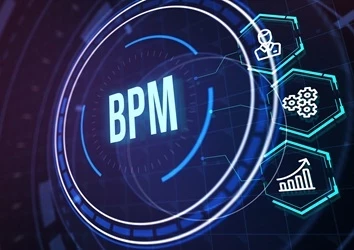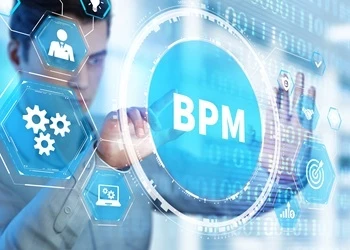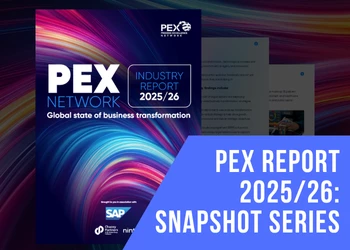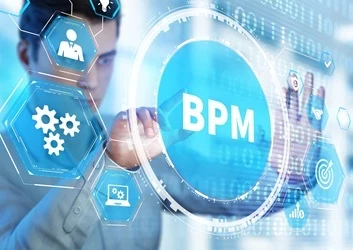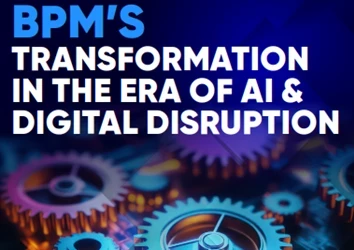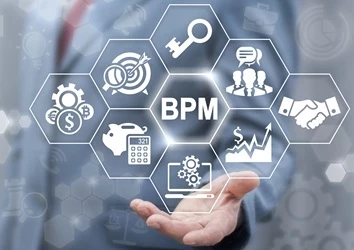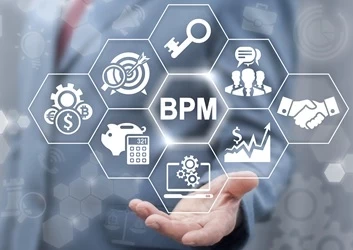Mercado Libre: Operational excellence (OPEX) & BPM at Latin scale
Why Mercado Libre is a masterclass in BPM, logistics engineering and operational rigor across one of the most complex regions in the world
Add bookmark
When people ask why I’m such a fan of Mercado Libre, my answer is simple: it feels like a multi-brand virtual shopping center where I can find almost anything – groceries, gifts, furniture – and get it in a few clicks.
Delivery is consistently fast, often next day, sometimes same day and the experience is remarkably seamless. That level of consistency comes from operational excellence (OPEX), smart process design and relentless logistics execution at continental scale.
Join the PEX Network community

Don't miss any news, updates or insider tips from PEX Network by getting them delivered to your inbox. Sign up to our newsletter and join our community of experts.
Learn MoreWhy Mercado Libre matters (by the numbers)
- US$21 billion revenue in 2024, with $1.9 billion net income; Q1 2025 revenue $5.9 billion and $494 million net income. As a reference, in 2024, Falabella had a revenue of $13 billion and Cencosud of $17.5 billion.
- Over 100 million annual unique buyers in 2024. 67 million buyers in Q1 2025 alone.
- Speed at scale: In Q4 2024, 49 percent of shipments were same or next day. In Q1 2025, 50 percent were same/next day and 74 percent under 48 hours.
These metrics show that Mercado Libre is a significant actor by more than just Latin America standards. The throughline is process discipline: simplify choices for sellers, standardize how inventory moves and use data to route, promise and deliver.
Mexico and Brazil: The heavy lifters
Two markets explain a lot of Mercado Libre’s momentum. and both double as case studies in process design:
- Mexico: 2025 plans include $3.4 billion investment and 10,000 new jobs, with an expanding network of 12 distribution centers, ~100 last-mile sites, ~1,000 electric vans and four dedicated cargo aircraft operating from Querétaro’s air hub, supporting same-day delivery in ~25 cities.
- Brazil: 2025 guidance calls for R$34 billion ($5.8 billion) investment and ~14,000 new jobs, reinforcing Brazil as Mercado Libre’s largest market.
Investing at this scale only pays off when every link in the chain is standardized: inbound, storage, pick/pack, line-haul, sort and last-mile. Mercado Libre’s quarterly disclosures make the payoff visible; more items delivered within 24 – 48 hours, more buyers returning and operating leverage that shows up in margins.
Join us at All Access: OPEX Operational Excellence 2025!
Inside the operating model
Standardize the flow (everywhere)
Across markets, Mercado Libre shifts more parcels into its managed network and “full” (fulfillment) program. That creates a predictable flow where SLAs drive upstream behavior: listings with good stock, proper packaging and accurate dimensions move faster and cheaper.
Build density to win time
Same/next day coverages are only possible with dense nodes close to demand. In Mexico, the combination of multi-node distribution centers, air hub capacity and electronic vehicles last-mile fleet is textbook queue-time reduction.
Treat logistics as a BPM system
What looks like “fast shipping” is really a business process management (BPM) issue: constraint identification (bottlenecks), standard work for pick/pack, TMS-driven lane selection, dock scheduling and feedback loops (NPS, returns, carrier dwell times) feeding back into promise dates and inventory placement. Mercado Libre’s quarterly cadence shows those loops tightening. e.g. half of parcels arriving the same or next day in Q1 2025.
Register for All Access: BPM Business Process Management 2025!
A Chile lens: My experience as a user
In Chile, I’ve watched the experience converge toward a two-day national promise, with Santiago regularly on next day. That started to happen when Mercado Libre put real asset weight behind the promise:
- A 100,000 million² fulfillment center in Colina, north of Santiago (renewables-powered) sized for ~15 million items.
- A target of >90 percent of shipments under 48 hours nationwide, with >50 percent under 24 hours (published operational claims in 2024).
- Ongoing investment in 2025 ($550 million) to extend coverage, capacity and FinTech services.
The pattern is familiar to anyone in operations: push more SKUs into “full,” segment by velocity, shorten the physical distance to the buyer and let the system learn. The delight you feel at the doorstep is the direct result of those choices.
What this means for incumbents
Think of Mercado Libre as Amazon-like in its operational ambition, but with a playbook tuned to Latin America’s geography, infrastructure and regulatory realities. Traditional retailers (e.g. Falabella and others) have strong brands and omnichannel networks, but the bar on delivery speed and reliability keeps rising. The gap needs more to be closed than just UX alone; it’s about flow efficiency, facility placement, carrier strategy and ruthless standardization.
The takeaways for transformation leaders:
- Speed is designed: Half of Mercado Lib’s parcels now arrive same/next day and three-quarters within 48 hours region-wide. That’s a target condition reached through dense nodes, air capacity and standardized upstream work.
- Scale follows standard work: The more inventory that flows through the managed network, the more predictable the outcomes and the better the unit economics.
- Invest where the constraint lives: Mexico and Brazil absorb most capex because that’s where incremental minutes saved translate into continental SLA wins.
Personally, I still think of Mercado Libre as that “virtual shopping center” that lets me buy almost anything, conveniently, at reasonable prices, with delivery that matches (or beats) my expectations. Under the hood, it’s a masterclass in BPM, logistics engineering and operational rigor across one of the most complex regions in the world.
Accelerating business transformation with bespoke solutions on ServiceNow App Engine
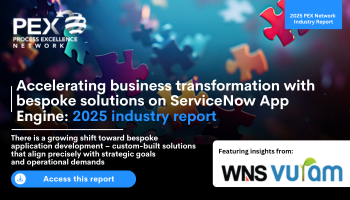
Today, off-the-shelf software solutions offer diverse features that enable vast opportunities to implement and maintain business transformation. However, in some circumstances, capabilities lack the flexibility and specificity required to address the unique challenges and workflows of individual organizations. As a result, there is a growing shift toward bespoke application development – custom-built solutions that align precisely with strategic goals and operational demands.
Download this report to explore how enterprises can harness the power of custom applications to drive meaningful transformation. With the growing adoption of low-code platforms like ServiceNow App Engine, organizations are building custom applications faster and with greater control. By empowering both IT professionals and citizen developers to build tailored solutions, organizations can significantly reduce time to value while maintaining control over quality and compliance.
Download Now



